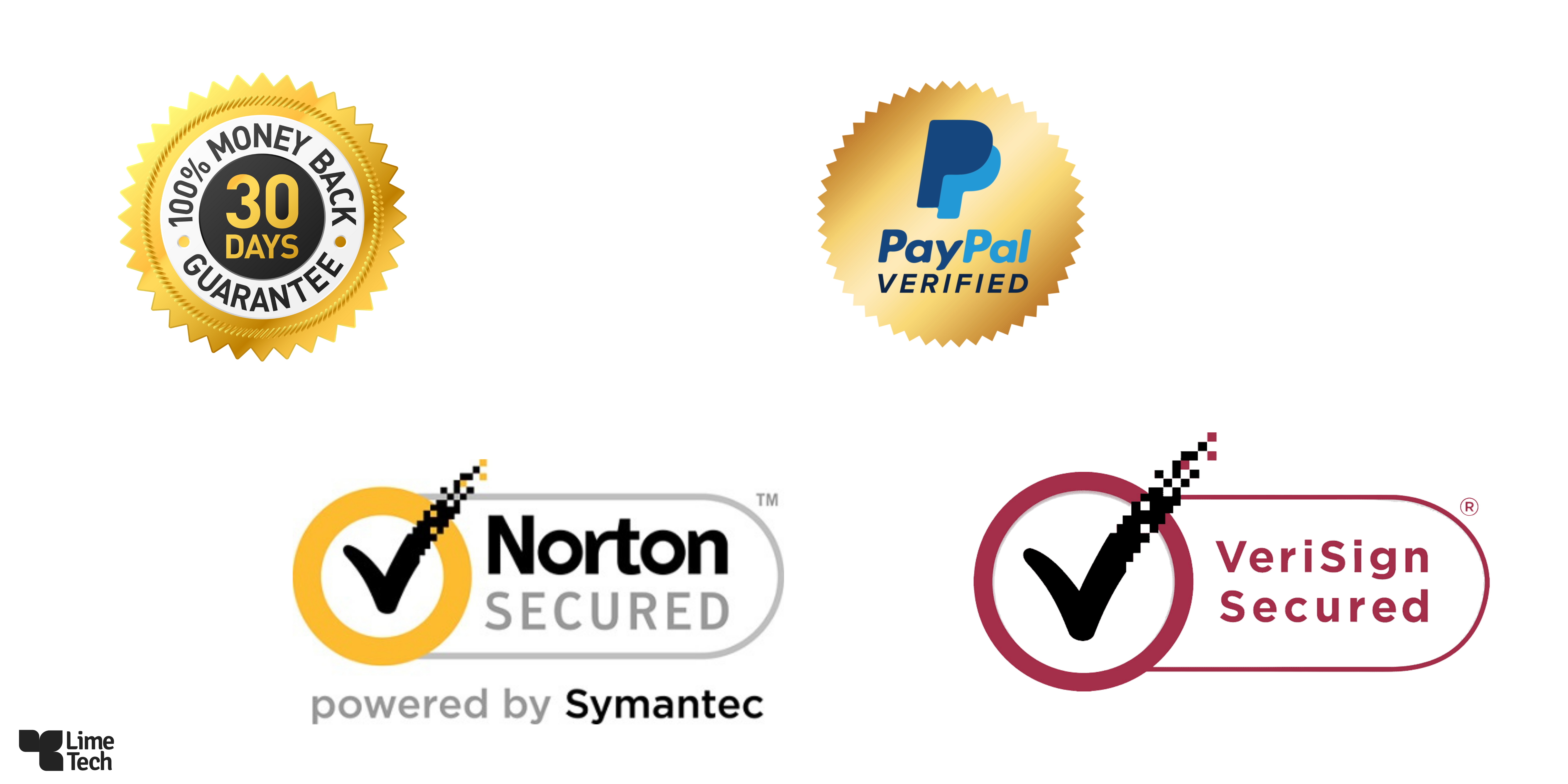Building a brand new e-commerce site? One of your biggest challenges is figuring out how to inspire confidence. Your customers will want to know things like “Is this business trustworthy?”, “Will my credit card information be safe?”, or “What happens if I don’t like the product after I pay for it?”.
5 ways to gain trust with your e-commerce store

In matters of confidence, time is of the essence. You may have heard that when meeting someone face-to-face, you have as few as seven seconds to convey a positive first impression. You may not have heard the spine-tingling fact that when it comes to your website, you have as few as 50 milliseconds to make an impact.
Your first job, when designing your new e-commerce site, is to show them you’re a reputable business, and to do it fast. How so? Let’s get into it.
1. Make an impression with clean and clear design

Since we’re talking about speed, it pays to start with visual impact. According to one MIT study, it takes as few as 13 milliseconds for the brain to process a visual image. Leverage those early milliseconds to make a great first impression with up-to-date visual design, an iconic illustration or photograph, and a prominent logo.
Follow UI/UX design best-practices to keep things clean and clear, and avoid unnecessary complexity. When it comes to first impressions, your job is to show vs. tell whenever possible. For example, instead of saying “our customers are sharp dressers with money to burn” you could convey this with the perfect photo, instead.
2. Ensure fast load times

If your site’s not loading, your prospects are already on their way out the door. Do a page-speed test to find out your load time score for both desktop and mobile viewing.
Make sure your site is responsive and mobile-friendly to ensure all customers can access your store, no matter their device. Given that more than 50% of website traffic comes from mobile devices, the advice these days is to take a mobile-first approach to design. If you’re not sure how to achieve this, hire a web developer to give you a hand.
3. Design for easy navigation

Most customers will visit your site with a clear goal in mind. If they can’t find what they want, they’ll get frustrated and say, “adios!”. Clear information architecture, including categories and subcategories, will help shoppers navigate your e-commerce site.
When they first arrive, they may scan for key words and phrases to determine whether you offer what they’re looking for. Breadcrumb navigation helps shoppers know where they are on your site, and navigate back to where they came from when necessary.
4. Provide trust factors and social proof
In e-commerce, your first job is to establish trust, fast. You can do this by offering social proof that your brand is loved by others. Some examples of social proof include testimonials, product reviews, and social media shares. You could take it a step further by embedding social media content right into your site.
Did a local celebrity rave about your line of lipstick? Include their picture and quote in a prominent location. Was your brand mentioned in Boston Magazine? Add an “As seen in…” section to show off your great publicity.
Trust badges are another major factor valued by customers. Common trust badges include SSL security badges, 3rd party endorsements, and money-back guarantee badges. Especially when you’re a new brand, without many testimonials and reviews, it can pay to give your trust badges some prominent real estate.

5. Give them the information they need
Customers want to know you’re reliable and trustworthy, and it’s your job to provide the information they’re looking for. Offer shipping details and a clear return policy so they know what to expect. A Contact Us page is also a valuable confidence-builder. An FAQ section will save you and your customers a lot of time and energy, too.

Finally, never underestimate the power of great copywriting. A clear brand voice, and content that’s free of spelling and grammar errors, will go a long way toward instilling trust and confidence.
Now that you’ve read our 5 ways to gain trust with your e-commerce store, you have the tools to bring it all home. With these five strategies in place, you’ll inspire confidence, ease doubts, and answer unspoken questions. And, when customers encounter your highly credible site, they’ll be primed and ready to shop.
You’re all set to sell your products with ease. Let’s go!
If you need help getting your e-commerce store designed and launched, we’re happy to lend a hand. We can assist with UI/UX design, e-commerce website development, and content creation. Tell us about your project and we’ll give you a fast and easy quote for the job.
LimeTech is a creative tech company with a focus on app development. We help brands grow their impact by building digital products that please customers and solve business challenges. Our work includes strategy, design, content, and tech planning. Check out our portfolio or reach out to start a conversation about your project.

![Everything is agile [updated]](https://limetech.co/storage/2021/11/yogendra-singh-0WYnzbYIRK0-unsplash-550x309.jpg)
![Nice to meet you, color! Color terminology explained. [updated]](https://limetech.co/storage/2021/09/reuben-4CCJ-NOUkB0-unsplash-1-496x330.jpg)